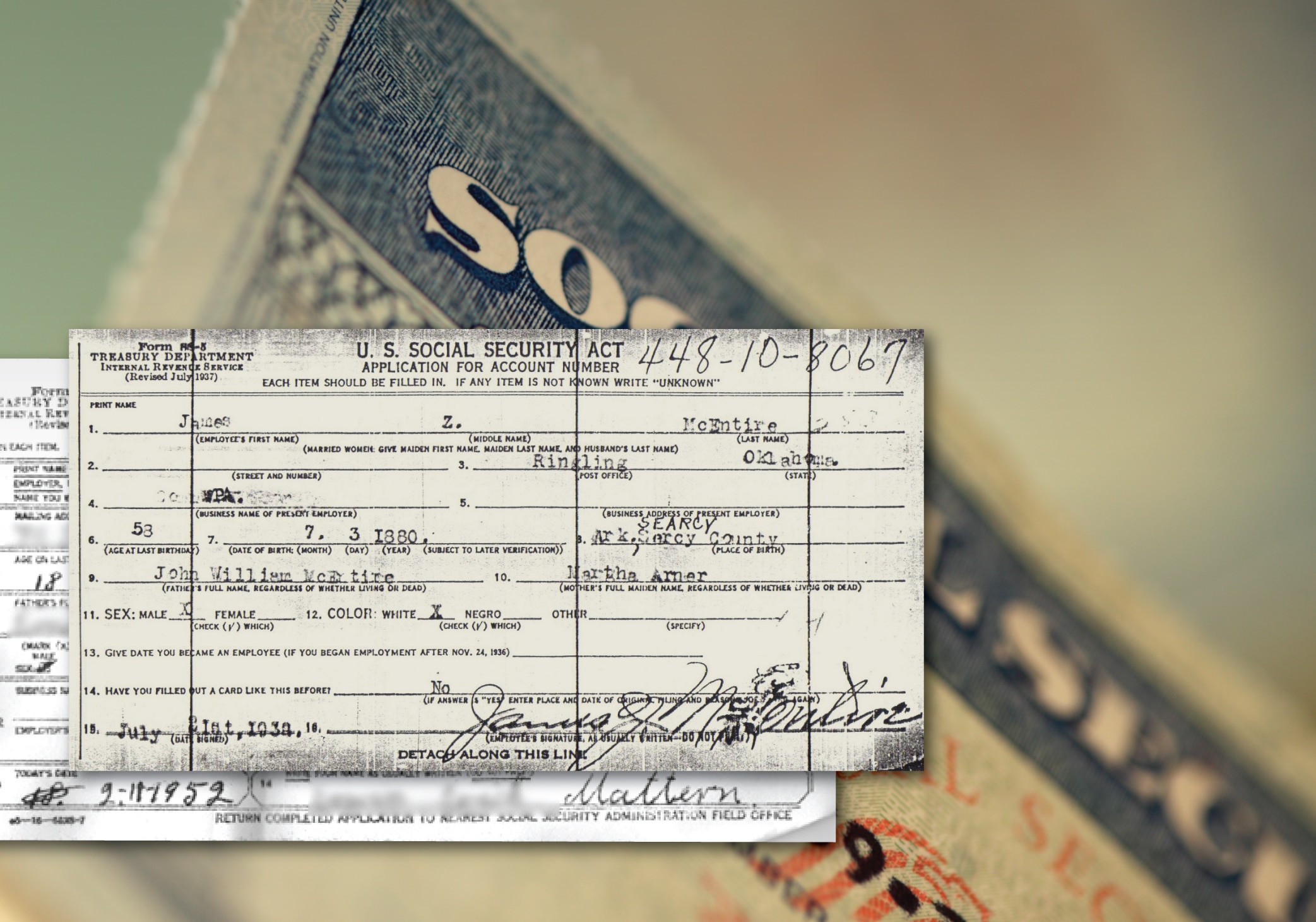Ancestry® Family History
Social Security Death Index (SSDI)
The Social Security Death Index (also known as the SSDI or the SS Death Index) lists basic information, such as the date of death and the residence where the last claim was sent by the Social Security Administration. It mostly includes people who died after 1962. As an index, which is a type of record that is a simple overview of an actual record, the SSDI contains only basic details; nonetheless, it can open up new channels for not only learning more about the deceased but also exploring your unique family story.

More About the Social Security Death Index
In 1935, Franklin Delano Roosevelt signed the Social Security Act, which created a system of unemployment insurance, retirement benefits, and welfare programs. Since then, millions of Americans have applied for Social Security numbers to receive assistance. As part of the application process, they provided their name and birth date and kept their address current to receive benefit checks.
Here’s how it works. When someone dies, a family member or funeral home typically reports it to the Social Security Administration (SSA), either to stop payment for the deceased or to request survivor benefits. The SSA enters this information into the death index. Note that most index records are for deaths after 1962, as the SSA began using a computer database that year—though a few go back to 1937.
What You'll Find in Social Security Death Index Records
The Social Security Death Index is a valuable place to learn more about your family. It lists birth date, death date, and where and when the Social Security number was issued.
Once you locate your relative in the SSDI, you can order their Social Security application from the SSA, potentially unlocking new discoveries such as maiden name, birthplace, and parents’ names. The last address on record is where the SSA sent the final benefit check, so it's likely where your relative was living when they died; it could also be the address for the surviving spouse. This can help when you search other death records, leading you to the death certificate, funeral home record, or a more detailed biographical picture in an obituary.
Social Security Death Index Records on Ancestry®
Ancestry® has a Social Security Death Index (SSDI) collection spanning 1935 to 2014, which has over 90 million records. The index includes people who had a Social Security number, received Social Security benefits (or whose families received survivor benefits), and whose deaths were reported to the SSA.
The SSDI database is a good place to find information that can help you uncover important aspects of your family story. For instance, let's say you want to learn more about your grandmother's side of the family but are stuck because you don't know her maiden name. For a fee, you can request her application from the SSA. In addition to colorful details about her life, like where she worked, the application will have your grandmother's maiden name, plus her parents' full names—and her mother's maiden name. That's two more branches of your family to explore.
Tips for Searching the SS Death Index on Ancestry
If you search Social Security Death Index records on Ancestry, here are some tips to keep in mind during your search.
Start with a name and birth date.
The Social Security Administration does not typically include middle names or initials in its data. But there are many instances where such information is actually included in the Social Security Death Index.
Look for alternate name spellings.
Names might have been misspelled, especially if they include punctuation. The last name O'Connor could appear as “Oconnor,” for instance.
Double-check any information you find in other records.
If you find your ancestor’s death index record, keep in mind that, like most any record, you should double check the information against other existing records. On Ancestry, you can compare findings from the SSDI with census and birth records to help verify you've found the right person, with the correct details.
Start Making Family History Discoveries With an SSDI Search
Social Security Death Index records contain key information that will help you unlock other valuable historical records. Paired with the trove of resources on Ancestry, you could find new details about a family member who died between 1935 and 2014. Just enter their name in the U.S. Social Security Death Index collection on Ancestry today.